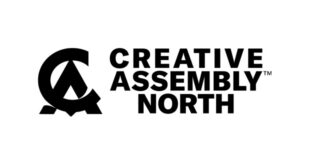Far from being the developer of World of Tanks and World of Warships, Wargaming has expanded to be a publishing powerhouse. We’ve recently shared news of its studio acquisitions and its drive into the mobile games market. We’ve also learned about its deal with Epic Games’ Unreal Engine and the combined drive to bring the experiences that engine can provide to mobile platforms. But what’s driving this third-party publishing boost behind the scenes?
We’ve learned to take a consultative approach by identifying gaps and opportunities, pointing out possible risks and challenges
Jerry Prochazka, Wargaming Alliance
Wargaming Alliance is the third party publishing arm of the business, which has now joined with Wargaming Labs. There are already partnerships with big triple-A developers like Creative Assembly and its Total War: Arena game, so why has this merger of the third party publishing team occurred?
"It was a natural transition for us," says the head of Wargaming Alliance, Jerry Prochazka. "We had Wargaming Labs focused on smaller indie teams and Wargaming Alliance focused on larger opportunities, such as Total War: Arena. However, when we considered this approach from an external point of view, categorizing developers or opportunities into small vs. large is not the best approach. As we have seen with games like World of Tanks, League of Legends, Rocket League, PUBG, etc., great ideas can come from anywhere and we need to be ready to engage developers from a united front, as that is how they experience us in the first place."
ARENA OF PUBLISHING
The addition of Total War: Arena and the pairing of Creative Assembly and Sega is a big one for the publisher. A well-known franchise and developer that are brimming with quality can only help the Wargaming Alliance brand. "The product has just moved into closed beta testing and the results are promising so far," says Prochazka, who knows that the partnership is an obvious one given the two developers genre expertise.
"Given the overlap between our broader Wargaming audience and the Total War community, the overall perception is positive. Total War: Arena naturally fits our distribution client, together with World of Tanks, World of Warships and World of Warplanes. Working with external partners differs from developing an internal product. We’ve learned to take a consultative approach by identifying gaps and opportunities, pointing out possible risks and challenges, and representing player feedback to the dev team to help them prioritize the highest-impact features that our players are asking for."
The deal with Creative Assembly is great, but what is the larger goal for Wargaming? "On a broader level, we have received some quite interesting products that are going through our internal evaluation process," says Prochazka. "Our long-term vision is to become a developer’s first choice for online, multiplayer, and free-to-play products on PC/console. We aim to achieve this by bringing Wargaming’s publishing and free-to-play expertise to developers who have a strong product vision.
"For us, we put much more weight on the team, their capability to execute than the idea itself. With free-to-play, a product must be able to evolve with the market and player expectations, which is reached by the team’s everyday decisions. As we work on more projects, we’ll be growing our internal crew of publishing and development directors to evaluate teams and their products, and take them to the market."
ACQUIRING TARGETS
With a focus now on publishing smaller developers on to a wider platform, Wargaming Alliance now has to look carefully at how it approaches submission and publishing. Free-to-play platforms can end up messy very quickly. So how are Wargaming going to approach its product vetting?
"Once we have a playable demo, we take products through an internal evaluation, which includes about 200 internal gamers of various roles," says Prochazka. "They are regional publishing producers, engineers, designers, and CS team members. They share their regional feedback on the game, along with our internal team, and the business intelligence team.
"The product is then scored based on various parameters. Next step is various stakeholders determining if the product should move forward along the road to the greenlight, where we do an intensive art, design, tech, and production studio diligence in parallel with a business due-diligence review.
"Through this due diligence, we are looking at both product and team risks, which make the total project risk for us. As mentioned before, the team’s ability to execute on their vision is more important than the idea itself. Based on all this information, we run the product through our internal greenlight process for a go/no go."
All of this is a learning process for Wargaming Alliance, but it’s something that they are equal to as the company as a whole changes its focus. "With the success of World of Tanks and now transitioning into a multi-product organization, we’ve shifted towards a product-group structure," says Prochazka. "This allows products to operate independently, while functions are to focus on the craft, development, hiring, and people management aspects.
"We will operate Wargaming Alliance titles in the same way and have already begun so with Total War: Arena. The only difference is that key development roles are assigned on our partners’ side, whereas publishing roles are filled in Wargaming. It’s a joint product-group structure that we expect will evolve with time as we learn."

 MCV/DEVELOP News, events, research and jobs from the games industry
MCV/DEVELOP News, events, research and jobs from the games industry




